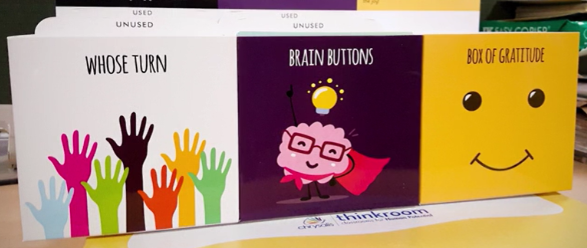In a normal classroom, we see students having lively discussions. They talk and aren't afraid to share their opinions freely. When the teacher asks questions, they answer and if most of the answers are right, the teacher assumes that the students have understood the lesson and moves on to the next one. But, let's take a closer look. Observe the students who are participating. Are they the same kids who usually talk? Do each and every kid participate in a discussion? A few kids respond only if they are called out by name. Does your class have students like that too? Sometimes, there are shy and introverted students who like to keep to themselves. Are there such students in your class? When we see a class discussing a topic, it doesn't necessarily mean that every single kid is participating in it. It just seems that way because the energetic kids take up a lot of space. The idea of seeing a classroom through a fisheye glass (the ones used in front-door peepholes), without seeing the whole picture is called a fisheye syndrome.
Do you have fisheye syndrome?
Most teachers think they don't. But the fact is even good teachers are affected by this. There's an easy way to know this. The next time there's a discussion, observe how many students actively participate in these discussions, how many just respond, how many students talk only once, and how many don't talk at all. The numbers may surprise you, especially the ones who stay silent. If most of the students in your class stay silent, then you have your answer. It's easy and natural to make this mistake. People usually gravitate to people who talk and they tend to listen. It's easy to get distracted and overlook the silent ones. If you're surprised by the scores of the students on class tests, that's another indication too. You think that the students understood the topic. For a pop quiz, you usually pick random students and most of them might've answered correctly. But, chances are students who haven't grasped the concept might not have been picked at all. Fortunately, there are ways to avoid this.
Ways to avoid fisheye syndrome
The best way is to pay attention to each and every student in the class, especially during group discussions. Involve the introverted students more in class discussions. Give them enough time to think and answer. You can also give them topics for discussions beforehand so that they can prepare. Make sure that you do this slowly so that there's no sudden change or they might feel like they're put on the spot. Give the introverted students more speaking practice and the extroverted students more listening practice. Students can learn a lot from listening too. For students who talk more, ensure that their points are correct. Being the loudest in the room doesn't make them right.
There's a way to make sure that there's equal participation in class. Give each kid an animal sticker. When you call an animal, the student has to stand in front of the class and speak their minds. Every week you can have a new theme like colors, flowers, vegetables, etc. Or you can also use the Whose Turn box provided in ThinkRoom kits. All the names of the kids can be dropped in the unused section of the box. The teacher can call out a name for quizzes, discussions, presentations, etc. This ensures that each kid gets their turn to share their views about the discussions. The used name chits can be dropped in the used box to avoid mixing up the names of the kids who've had their turn with those who haven't. To know more about the ThinkRoom kits, check out this blog, 'Fun Tools Used In ThinkRooms'.

Make sure that your students are comfortable enough to ask questions without the fear of being criticized. Before you move on to the next lesson, be certain that all the students have a thorough understanding of the current lesson. To test this, make sure that your questions are framed accordingly. The questions should focus more on understanding and application rather than focussing on the student's knowledge. Follow these few steps and you will have a broader view of your classroom.
The Fisheye syndrome is a common but easily avoidable situation in classrooms. All that is needed is a lot of attention and a little bit of patience to combat this. Each student has their own strength and weakness. As teachers, we should not only focus on their weaknesses but their strengths too. The best thing we can do is make them better versions of themselves without changing them too much. It is hard to pay individual attention to each and every student. But taking the effort and doing so will help the kids reach their full potential and that's the goal, isn't it?
Source: https://www.cultofpedagogy.com/fisheye/





